The Human Health and Climate Benefits of Seaweed Forests

Photo via Unsplash.
Seaweeds, a wondrous underwater gift from the Earth, have a long history in ancient medicine, folklore, farming, and food growing. We are discovering just how vital these life-generating coastal plants are. They support a huge range of marine life and have been identified as a key solution to the climate crisis.
Seaweed forests have the power to sequester carbon on land and sea, reduce methane production in livestock, rebuild marine ecosystems, enrich the soil, provide economic benefits, and address the global plastics problem. As it turns out, this primitive plant/algae has so many human health and climate positive benefits … but only if we cultivate it traditionally / regeneratively.
RELATED POST: How we can Heal the Planet with Regenerative Agriculture
Food Security
Producing large volumes of seaweeds for human food, animal feed, and biofuels could represent a transformational change in the global food security equation. According to a World Bank study, in 2012, global production of seaweeds was approximately 3 million tons dry weight and growing by 9% per annum. Increasing the growth of seaweed farming up to 14% per year would generate 500 million tons dry weight by 2050, adding about 10% to the world’s present supply of food, generating revenues, and improving environmental quality.
Affiliate Disclaimer
This website is supported by its audience and contains affiliate links. An affiliate link means I may earn advertising or referral fees at no extra cost to you if you make a purchase through these links. (read more)
The Ocean’s Superfood
Known as sea vegetables, they are extremely versatile and can be used in many dishes, including sushi rolls, soups, supplements, even popcorn!
• Seaweeds are a great source of vitamins like A, C, E, K, and B, and minerals including iodine, selenium, calcium, and iron. It can contain anti-inflammatory and anti-microbial agents.
• Seaweeds also contain amino acids which are the building blocks for protein.
• Seaweeds are also said to control a person’s appetite. They might be low in fat but they are packed with soluble fiber, which helps control blood sugar levels and keeps the bowels moving. The fiber can help a person feel full on very few calories.
Not only are seaweeds an incredible source of nutrition, but many are used as emulsifiers in commercial goods like toothpaste, jellies, makeup, and skincare products.
Photo via Blue Evolution – Seaweed Popcorn
Climate Change Mitigation
just by growing, seaweed helps reverse global warming.
Seaweed eats more carbon than other plants as it grows. By drawing CO₂ out of the ocean waters (thereby allowing the oceans to absorb more CO₂ from the atmosphere) they help fight climate change. It grows at a rate 30-60 times faster than land-based plants. Trees slowly store carbon in their trunks as they grow, while seaweed grows quickly, storing carbon in its stipe (stem) and fronds (leaves)!
9% of the
World’s Oceans
Could Draw Down The Equivalent Of All Our Current Emissions
Researchers have estimated that if 9% of the world’s ocean surfaces were covered in “seaweed forests,” we would be removing 53 billion tons of CO2 per year from the atmosphere.

Photo by Anika Mikkelson via Unsplash.
Job Creation
According to a World Bank study, farming seaweeds in just .1% of the world’s oceans (approx. 100 million acres) could create 50 million jobs in direct on-farm employment alone. Annually, a mature, 10-acre regenerative ocean farm can produce 50,000 pounds of kelp and 250,000 bivalves, with the capacity to net more than $100,000.
Polyculture
over monoculture
Regenerative ocean farming works to mimic the diversity of ocean reefs by growing a mix of species that work cohesively. Each life form plays an important part. For example, because seaweed de-acidifies seawater, it becomes easier for anything with a shell to grow, and a single adult oyster can filter as much as 50 gallons of water a day. By growing shellfish and seaweed together, regenerative ocean farms turn into climate solution powerhouses. At the same time, these farms are safe havens for marine life that improve water quality and provide habitats that foster biodiversity and support the health of many aquatic species.

Photo via Unsplash.
Replacing Plastic
with seaweed
Startups are exploring seaweed’s potential to make bioplastic (plastics made from renewable sources like plants or old waste) that is naturally degradable and even edible, to replace plastic. Multicellular seaweed, cultivated in the sea, are eaten by single-celled microorganisms. They produce a polymer that can be used to make bioplastic that produces zero toxic waste and recycles it into organic waste. It can be made to dissolve when it hits the water, which is excellent for packaging edible goods like tea.
In Chile, designer Margarita Talep has developed a disposable bioplastic using Agar, a vegetable substitute for Gelatin, sourced from red seaweed. Natural dyes extracted from the skins of fruits and vegetables are used for coloring. Agar plastic is ideally suited for containing dry food items like pasta or rice. This bioplastic should decompose within 2 – 4 months depending on the climate’s temperature.
The edible water bottle by Ooho is an ingenious product that is not only environmentally friendly but also mitigates container contamination. It’s flexible membrane, which utilizes spherification, is made from a seaweed extract.
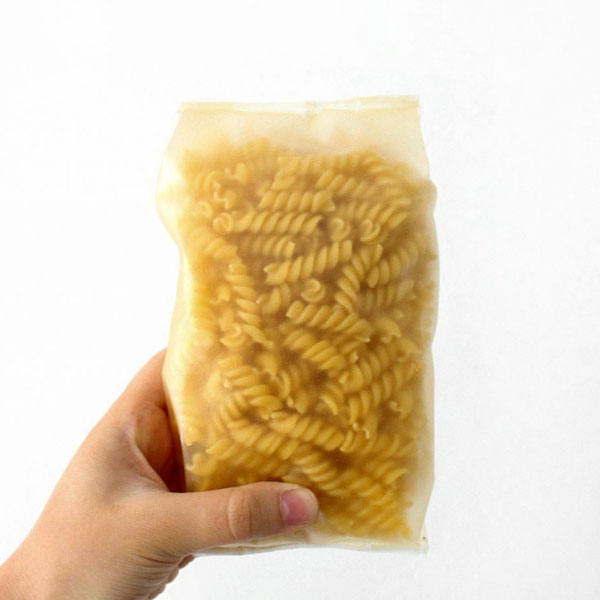
Photo by Agar Bioplastic.
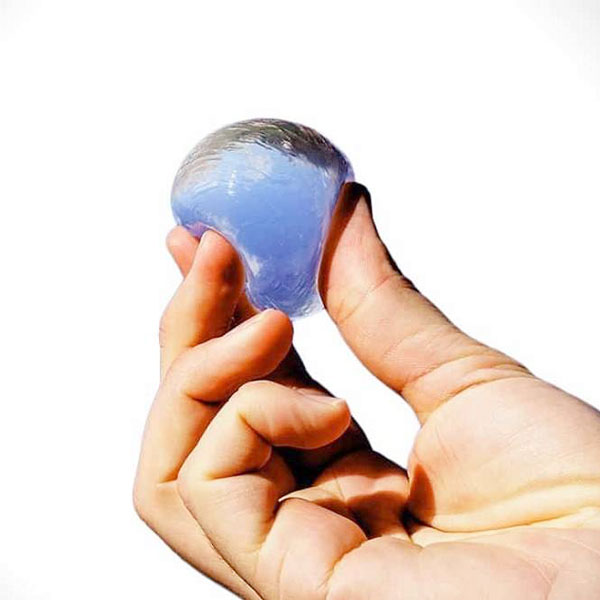
Photo by Ooho.
Seaweed + Livestock
equals less methane emissions
When cows eat, they burp food back up, chew it as cud, and swallow it again to make it easier to digest. During that process, which cows repeat dozens of times throughout the day, an enzyme made by microorganisms in their gut produces methane as a byproduct. The belching and flatulence of livestock release large quantities of methane, a powerful greenhouse gas, into the atmosphere. According to the U.S. Environmental Protection Agency, in the United States alone, domestic livestock – including cattle, sheep, goats, and buffalo – contribute 36% of the methane humans cause.
Researchers across the globe have been pursuing the idea that adding substances to feed might help reduce these methane-laden burps. It happened to be an ordinary farmer who hit upon the idea of supplementing cows’ feed with seaweed. The idea wasn’t intended to help the climate, but simply for his animal’s health. It doesn’t seem like much, but it could practically neutralize methane emissions from the digestive processes of some livestock, including the planet’s 1.5 billion cows. In lab tests and field trials, adding a small proportion of Asparagopsis taxiformis, a type of red algae, to a cow’s daily feed – about 0.2 of a percent of the total feed intake in a recent study – can reduce the amount of methane by 98%!!
Ancient Greek &
18th Century Icelandic
Farmers Deliberately grazed their cows on beaches
Turns out there was a reason why the ancient Greeks and 18th century Icelanders grazed their cows on beaches. Eating more of this underwater plant means less methane production, which indicates a more efficient and healthier cow belly. Historical evidence found they realized the productivity benefits it provided. When cows eat more efficiently, they need less land to eat from, become pregnant faster and produce more milk.
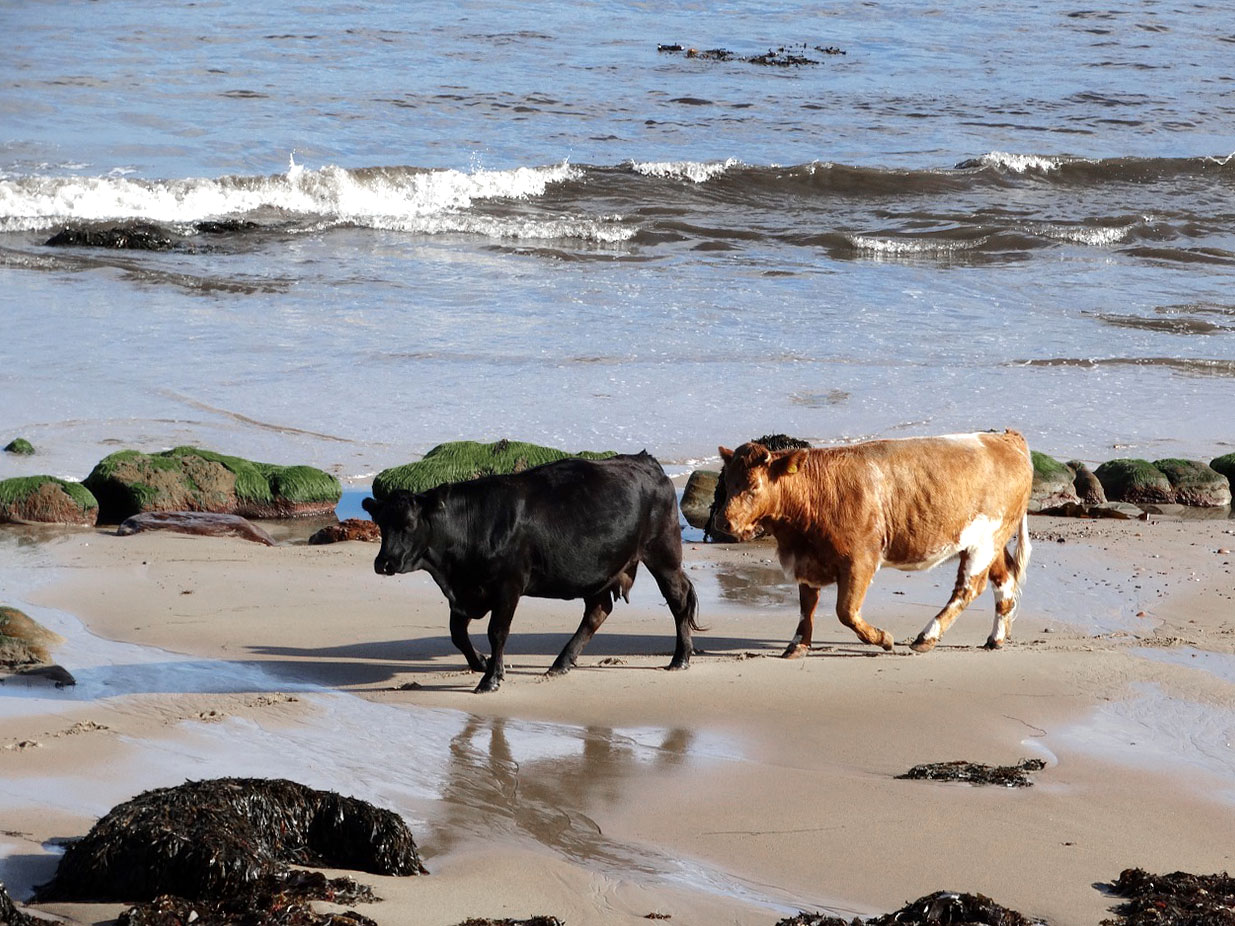
Photo via Pixabay.
Seaweed Fabric
a quasi-medicinal material
Seaweed might be the next eco-textile. Featuring breathable, durable, and moisture-wicking properties, SeaCell is an innovative fabric that is made with certified organic brown algae (Ascophyllum nodosum) found in the Icelandic Fjords.
A Lyocell process is used to create SeaCell. With a solvent-spinning procedure, the beneficial health properties and the active ingredients of seaweed are locked in by using natural cellulose derived from wood pulp as a host.
SeaCell absorbs sweat faster than cotton, making it suitable for activewear, underwear, and infant clothing.
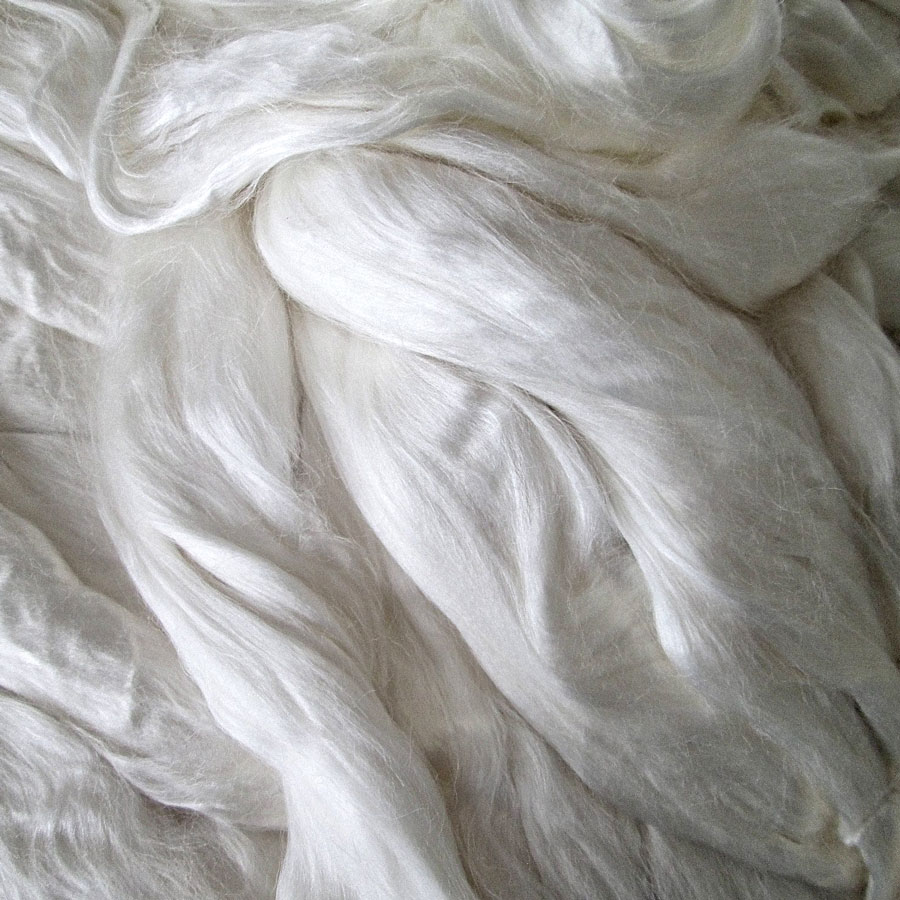
SeaCell fiber.
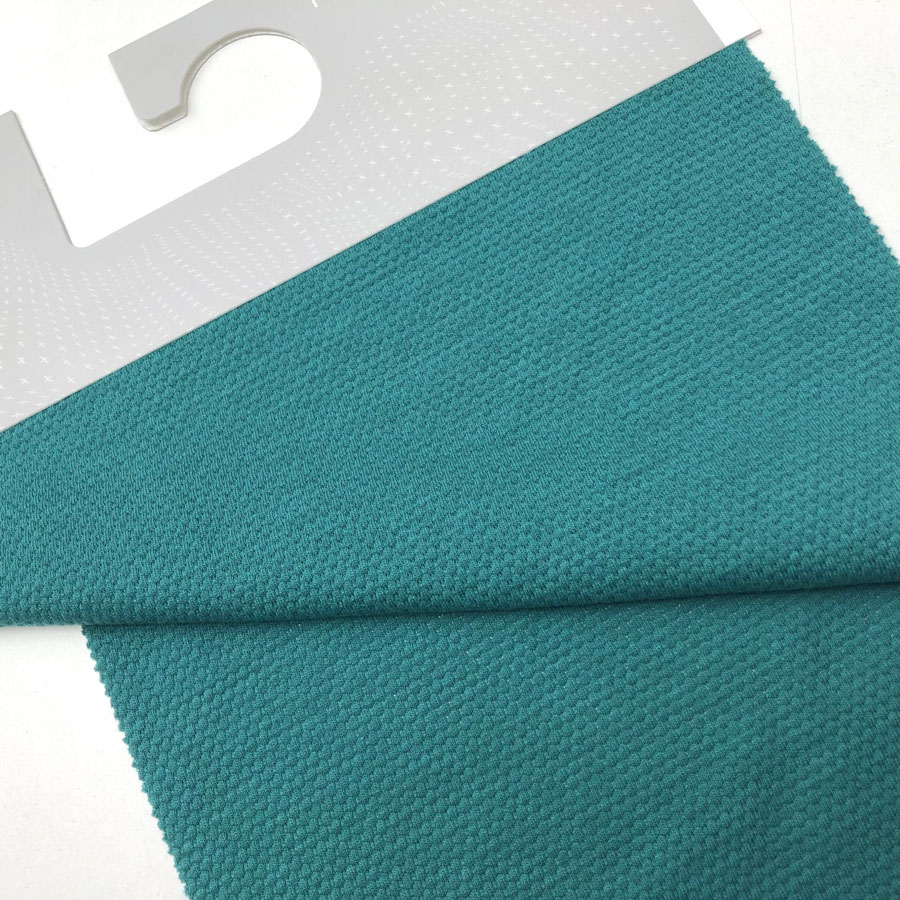
SeaCell fabric.
Seaweed farming is a small industry, and carbon sequestration alone is not a viable business operation. By supporting brands that support regenerative seaweed farming we can increase the demand for seaweed production.
FOOD
ATLANTIC SEA FARMS – a women-run company on a mission, offering delicious award-winning and obsessively sustainable kelp products from Maine.
AKUA – a modern food brand offering kelp jerky, pasta, and spices that is on a mission to create food the right way: healthy, delicious, plant-based, and with a positive impact on the planet. Their first product Kelp Jerky is the only high-protein, soy-free vegan jerky on the market!
BLUE EVOLUTION – for kelp pasta, popcorn, puree and wakame made with sustainably harvested North American seaweed.
GARDEN FERTILIZER
GROW MORE SEAWEED EXTRACT – I personally use this extract for fertilizing my seedlings and plants. It promotes a vigorous root system and dark green foliage. Grow More is committed to contributing to environmental protection and maximizing health and safety in the workplace and field, while inspiring value, and creative innovation.
COSMETICS
OSEA MALIBU – for clean skincare products made with seaweed hand-foraged from rigorously vetted suppliers and family or female-run collectives in local communities.
APPAREL
PANGAIA – a materials science company on a mission to save the environment. They are a global collective of scientists, technologists, and designers creating essential products from innovative tech and bio-engineered materials, including seaweed!
exit the matrix.
SOURCES
• Seaweed’s Bioactive Candidate Compounds to Food Industry and Global Food Security | PubMed Central (PMC)
• Safeguarding the future of the global seaweed aquaculture industry | SAMS United Nations University
• Seaweed Aquaculture for Food Security, Income Generation and Environmental Health | World Bank Group
• How ‘Third Way’ Technologies Can Help Turn Tide on Climate | Yale University
• SeaCell Fabric | Smart FiberAG
• Overview of Greenhouse Gases | EPA
• Mitigating the Carbon Footprint and Improving Productivity of Ruminant Livestock Agriculture Using a Red Seaweed | Science Direct
• Margarita Talep develops algae-based alternative to single-use plastic packaging | Dezeen Magazine
• Ohoo Water the Edible Bottle | Ohoo
• Featured Products: Blue Evolution, Atlantic Sea Farms, Akua, Osea Malibu, Pangaia, and Truly

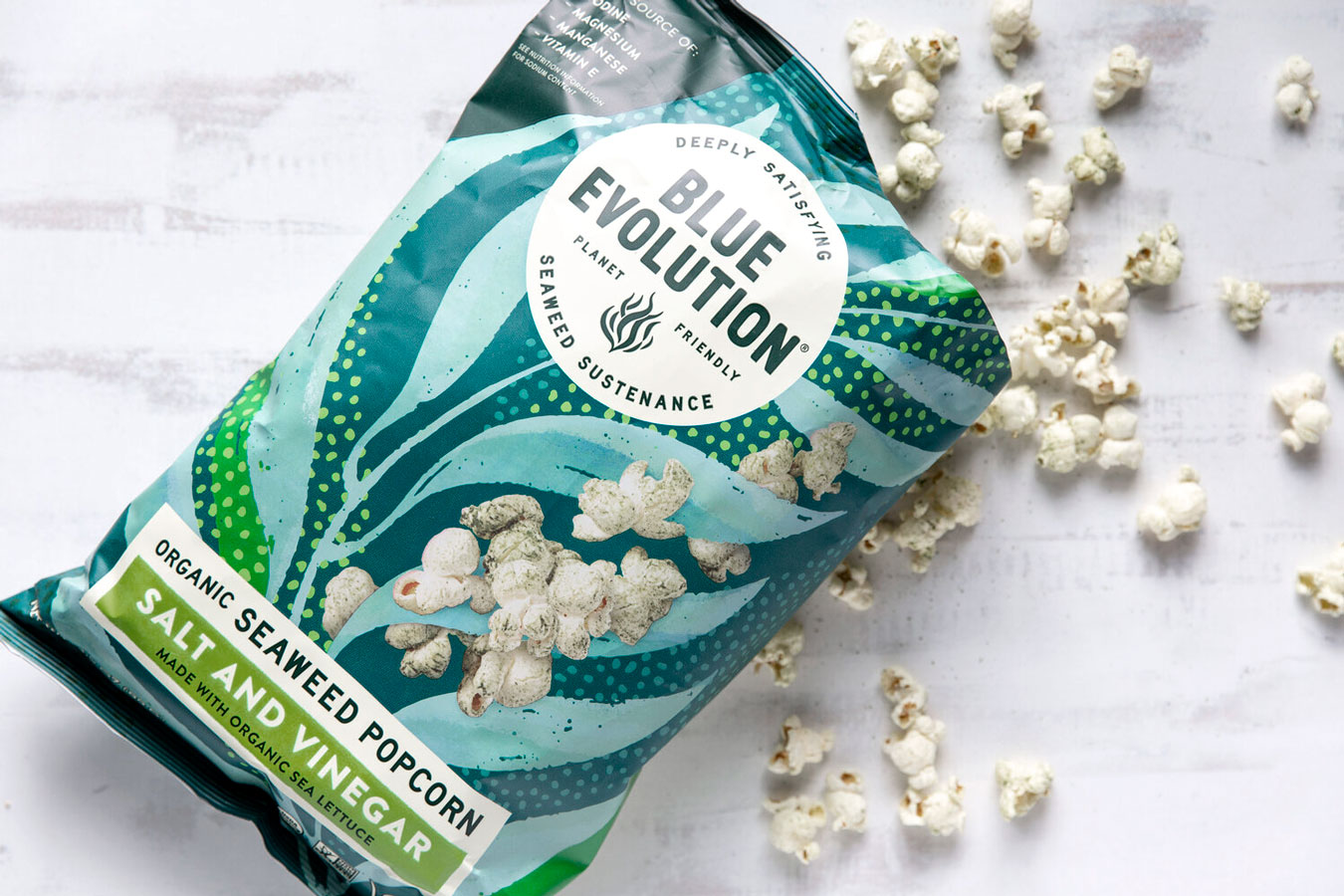




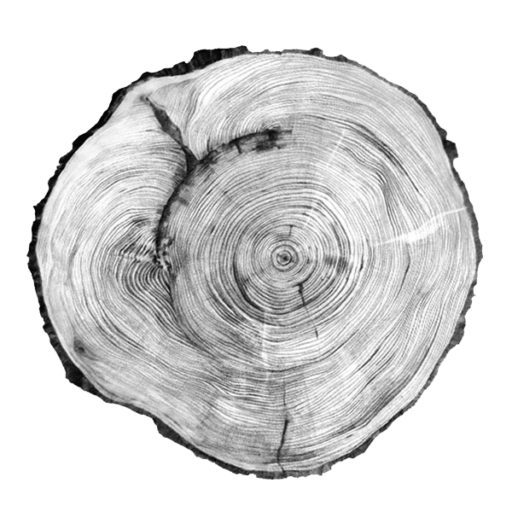
0 Comments